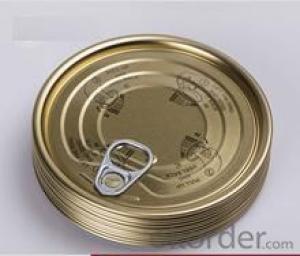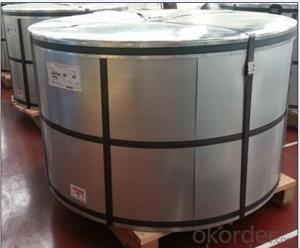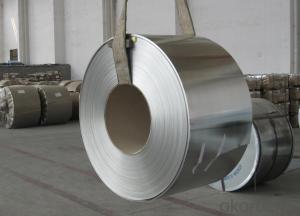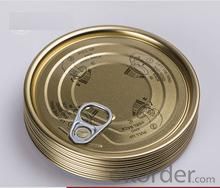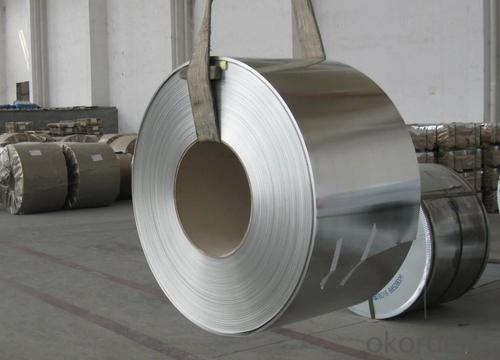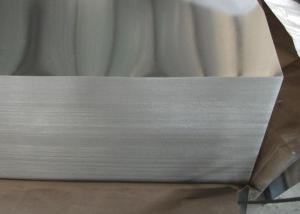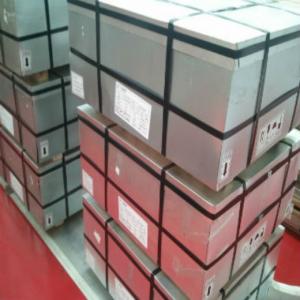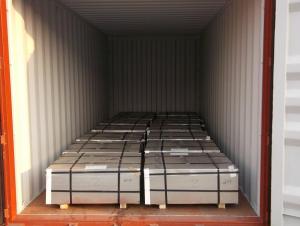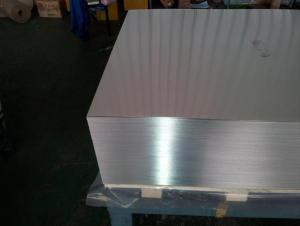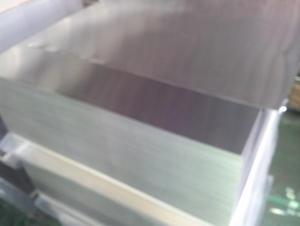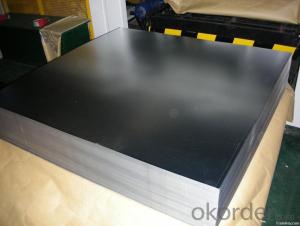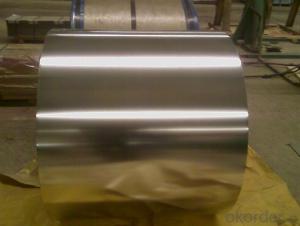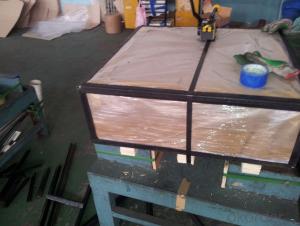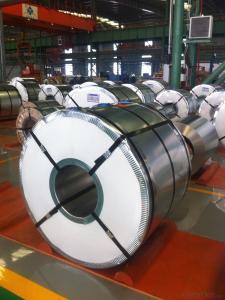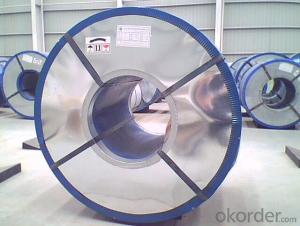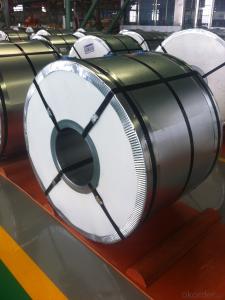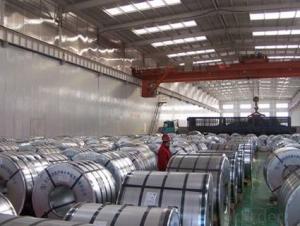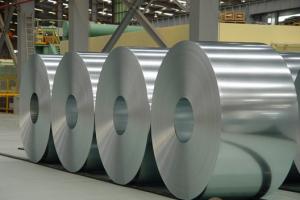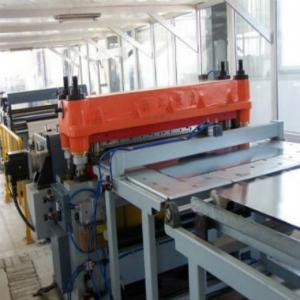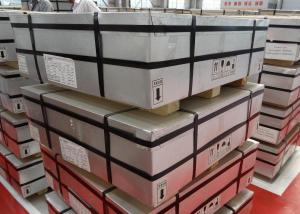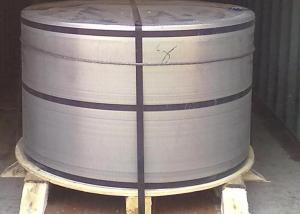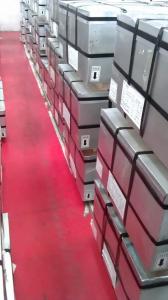Top Prime Quality Tinplate For Paint Cans, MR Material, BA
- Loading Port:
- China main port
- Payment Terms:
- TT OR LC
- Min Order Qty:
- 15 m.t.
- Supply Capability:
- 50000 m.t./month
OKorder Service Pledge
OKorder Financial Service
You Might Also Like
1.Usage
Tinplate is widely used for making all types of containers, containing industrial usage such as paint can, oil can, aerosol cans etc., and food cans like milk powder cans, tomato paste can, dry food cans etc.
2. Quality
As a state owned company and a large tinplate supplier in China, our tinplate quality ranks 1st level in China, similar to Bao Steel, Posco etc.
3. Specification
standard: GB/T2520, JIS G3303, DIN EN10202
Material: MR /SPCC
Thickness available: 0.16-0.50MM
Width available: 600~1050MM
Temper grade: T1 – DR8
Tin coating: ordinary 2.8g/2.8g, 5.6g/5.6g and others
Package: sea worthy export package.
Applications: Tin can for chemicals & paint cans, industrial cans, food cans
4.our production equipments

5. Our customers;
now our tinplate has been sold to more than 30 countries, including Europe countries, Gulf Area, South American, South Afric etc.
6. Our overseas markets:
Furthermore, in the year 2014, we have more than 10 overseas warehouses all over the word, located in KSA, UAE, Oman, Russia, Kuwait, Qatar, Oman, Chile, Brazil etc.
7. FAQ
a. what's the annual output?
about 500,000 tons per year.
b. where's the raw matrial from?
our hot rolled coil is purchased from Capital Steel and other state owned mill, with quite good quality.
c. how long is the delivery time?
normally for SPCC about 45~55 days, while 65~75 days for MR material
d. how to control the quality during production process?
inside our workshop, we have MES syestem. It realizes the optimization of the production procedure in the workshop. It could record each step of the whole production procedures, and if some problem appears, factory could easily found and take action, it’s quite helpful to monitor and control the quality.
- Q: How does tinplate impact the overall product design?
- Tinplate has a significant impact on the overall product design as it enhances the visual appeal and durability of the product. It provides a shiny and smooth surface, which can be utilized for branding and adding aesthetic elements. Additionally, tinplate offers excellent corrosion resistance, making it suitable for packaging products that require protection from moisture and oxygen. Its malleability allows for intricate shaping and forming, enabling designers to create unique and eye-catching product designs.
- Q: Can tinplate be used for HVAC systems?
- Yes, tinplate can be used for HVAC systems. Tinplate is a durable and corrosion-resistant material that is commonly used in the manufacturing of HVAC components such as ductwork, vents, and fittings. It provides excellent protection against moisture and can withstand high temperatures, making it suitable for HVAC applications.
- Q: How is tinplate manufactured?
- Tinplate is manufactured by coating thin sheets of steel with a layer of tin through a process known as electrolytic deposition. The steel sheets are first cleaned and then passed through an electrolyte bath containing a solution of tin salts. An electric current is applied, causing tin ions to be attracted to the steel surface, resulting in a uniform tin coating. Finally, the tin-coated steel is rolled and annealed to improve its mechanical properties, creating the final product known as tinplate.
- Q: What is the process for printing on tinplate?
- The process for printing on tinplate typically involves several steps. First, the tinplate sheets are cleaned and coated with a layer of primer to ensure proper adhesion of the ink. Then, the desired design or artwork is printed onto the tinplate using specialized printing techniques such as lithography or offset printing. After the printing is complete, the tinplate is usually coated with a protective varnish or lacquer to enhance its durability and resistance to corrosion. The printed tinplate sheets can then be further processed into various products, such as tin cans or decorative tin containers.
- Q: Can tinplate be soldered?
- Yes, tinplate can be soldered.
- Q: Can tinplate be used for packaging alcoholic beverages?
- Yes, tinplate can be used for packaging alcoholic beverages. It is a commonly used material in the packaging industry due to its durability, resistance to corrosion, and ability to maintain product freshness. Tinplate cans are often used for packaging beer, wine, and spirits, providing a reliable and protective container for alcoholic beverages.
- Q: How does tinplate packaging contribute to product freshness?
- Tinplate packaging contributes to product freshness by providing a protective barrier against external factors such as air, moisture, and light. This helps to prevent oxidation and preserve the quality, taste, and aroma of the packaged product. Additionally, tinplate packaging has excellent sealing properties, ensuring that the contents remain airtight and free from contamination, thereby extending the shelf life and maintaining product freshness.
- Q: What are the different types of tinplate printing techniques?
- There are several types of tinplate printing techniques, including offset lithography, screen printing, and digital printing.
- Q: Can tinplate packaging be used for stationery products?
- Yes, tinplate packaging can be used for stationery products. Tinplate is a durable and versatile material that can be shaped into various sizes and designs, making it suitable for packaging pencils, pens, erasers, rulers, and other stationery items. It offers protection against damage, is environmentally friendly, and can be customized with attractive prints or embossing.
- Q: What are the common printing methods used on tinplate?
- The common printing methods used on tinplate include lithography, screen printing, and digital printing.
Send your message to us
Top Prime Quality Tinplate For Paint Cans, MR Material, BA
- Loading Port:
- China main port
- Payment Terms:
- TT OR LC
- Min Order Qty:
- 15 m.t.
- Supply Capability:
- 50000 m.t./month
OKorder Service Pledge
OKorder Financial Service
Similar products
Hot products
Hot Searches
Related keywords
